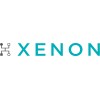
CNS Tau Kinetics in Healthy Aging and Alzheimer's Disease
Alzheimer's DiseaseBrain Diseases10 moreAlzheimer's disease (AD) is the most common cause of dementia and currently has no disease modifying treatments or simple accurate diagnostic tests. The goal of this project is to study how tau (a protein thought to cause AD) is made, transported and cleared in the human body. Better understanding of these processes may lead to improved understanding of AD, earlier diagnosis and a way to evaluate treatment.

Dasatinib Plus Radiation Therapy/Temozolomide in Newly-Diagnosed Glioblastoma
GlioblastomaCNS Disease1 morePhase I: Primary Objectives: -To define the maximum tolerated dose (MTD) of dasatinib (Sprycel) with radiotherapy (RT) and 6 weeks of concomitant temozolomide (TMZ) administered at 75 mg/m^2/day in patients with newly-diagnosed glioblastoma (GBM). Secondary Objectives: To characterize the safety profile of dasatinib (Sprycel) in combination with radiotherapy (RT) and concomitant TMZ in patients with newly-diagnosed GBM. To characterize the safety profile of dasatinib (Sprycel) in combination with adjuvant TMZ in patients with glioblastoma after RT. STUDY DID NOT PROGRESS TO PHASE II PORTION. Phase II: Primary Objectives: -To determine the effectiveness of dasatinib (Sprycel) with radiotherapy (RT) and 6 weeks of concomitant temozolomide (TMZ) administered at 75 mg/m^2/day followed by adjuvant temozolomide with concurrent dasatinib in patients with newly-diagnosed glioblastoma (GBM) as measured by overall survival. Secondary Objectives: To determine the efficacy of this treatment as measured by radiographic response (RR), progression-free survival (PFS) and time to progression (TTP). To characterize the safety profile of dasatinib (Sprycel) in combination with RT and concomitant TMZ in patients with newly-diagnosed GBM. To characterize the safety profile of dasatinib (Sprycel) in combination with adjuvant TMZ in patients with GBM after RT. Exploratory Objectives: -To correlate tumor genotype, tumor expression of dasatinib target proteins (e.g. Src, EphA2, c-kit and PDGFR), and PTEN levels with response to therapy with dasatinib and temozolomide.

ZK219477 (Sagopilone) in Patients With Breast Cancer and Brain Metastases
Breast CancerCNS DiseaseThe purpose of this research study is to determine the effects (good and bad) of ZK219477(sagopilone) on participants and their cancer. ZK219477 is a chemotherapy drug that is thought to work by interfering with the ability of cancer cells to grow and divide. It is a part of a group of drugs called "epothilones" which appear to cause shrinkage of cancer in some patients with breast cancer. It is generally difficult for chemotherapy to enter the brain. However, it is believed that ZK219477 crosses into the brain. We are also studying whether an investigational MRI scan procedure may eventually help to predict which patients will benefit from ZK219477.

XEN496 (Ezogabine) in Children With KCNQ2 Developmental and Epileptic Encephalopathy
EpilepsyEpilepsy in Children6 moreTo investigate the potential antiseizure effects of adjunctive XEN496 (ezogabine) compared with placebo in children with KCNQ2 Developmental and Epileptic Encephalopathy (KCNQ2-DEE).

Phase 1 ALKS 1140 in Healthy Adults
Central Nervous System DiseasesTo evaluate the safety and tolerability of ALKS 1140 in healthy adult subjects

Precision Medicine in Stroke
StrokeCerebrovascular Disorders4 morePROMISE aims at identifying novel diagnostic and prognostic circulating biomarkers for patients with acute stroke and at informing on crucial yet undetected pathophysiological mechanisms driving outcome after stroke by enriching all phenotypic information available from clinical routine with in-depth quantification of the circulating proteome and metabolome as well as other entities.

Safety and Efficacy Study of VY-AADC01 for Advanced Parkinson's Disease
Idiopathic Parkinson's DiseaseParkinson's Disease7 moreSafety and efficacy of AADC gene transfer in participants with Parkinson's disease.

Telerehabilitation With Aims to Improve Lower Extremity Recovery Post-Stroke
StrokeStroke10 moreThe purpose of this study is to examine the feasibility and effectiveness of a lower extremity telerehabilitation protocol with aims to improve lower extremity recovery among community-living stroke survivors across Canada.

Impact Dexmedetomidine on Postoperative Delirium in Patients After Intracranial Operation for Brain...
Central Nervous System DiseasesPostoperative delirium is one of the most common serious complications after major surgery and is associated with undesirable consequences. Prevention of postoperative delirium is recommended in the clinical guidelines and consensus statements. Dexmedetomidine, a highly selective α2-adrenergic receptor agonist, has been investigated as a pharmacological intervention to prevent postoperative delirium. Several randomized controlled trials have shown that prophylactic use of low-dose dexmedetomidine may decrease the incidence of postoperative delirium in patients after cardiac and non-cardiac operations. However, neurosurgical patients are often excluded from previous studies due to potential consciousness and cognition impairment. The investigators design this pilot study aiming to clarify the feasibility and safety of use of low-dose dexmedetomidine for prevention of postoperative delirium in patients after intracranial operation for brain tumor.

Stimulation With Wire Leads to Restore Cough
Spinal Cord InjuriesSpinal Cord Diseases6 moreThe purpose of this trial is to determine the efficacy of spinal cord stimulation, using wire leads, to produce an effective cough in patients with spinal cord injuries.
